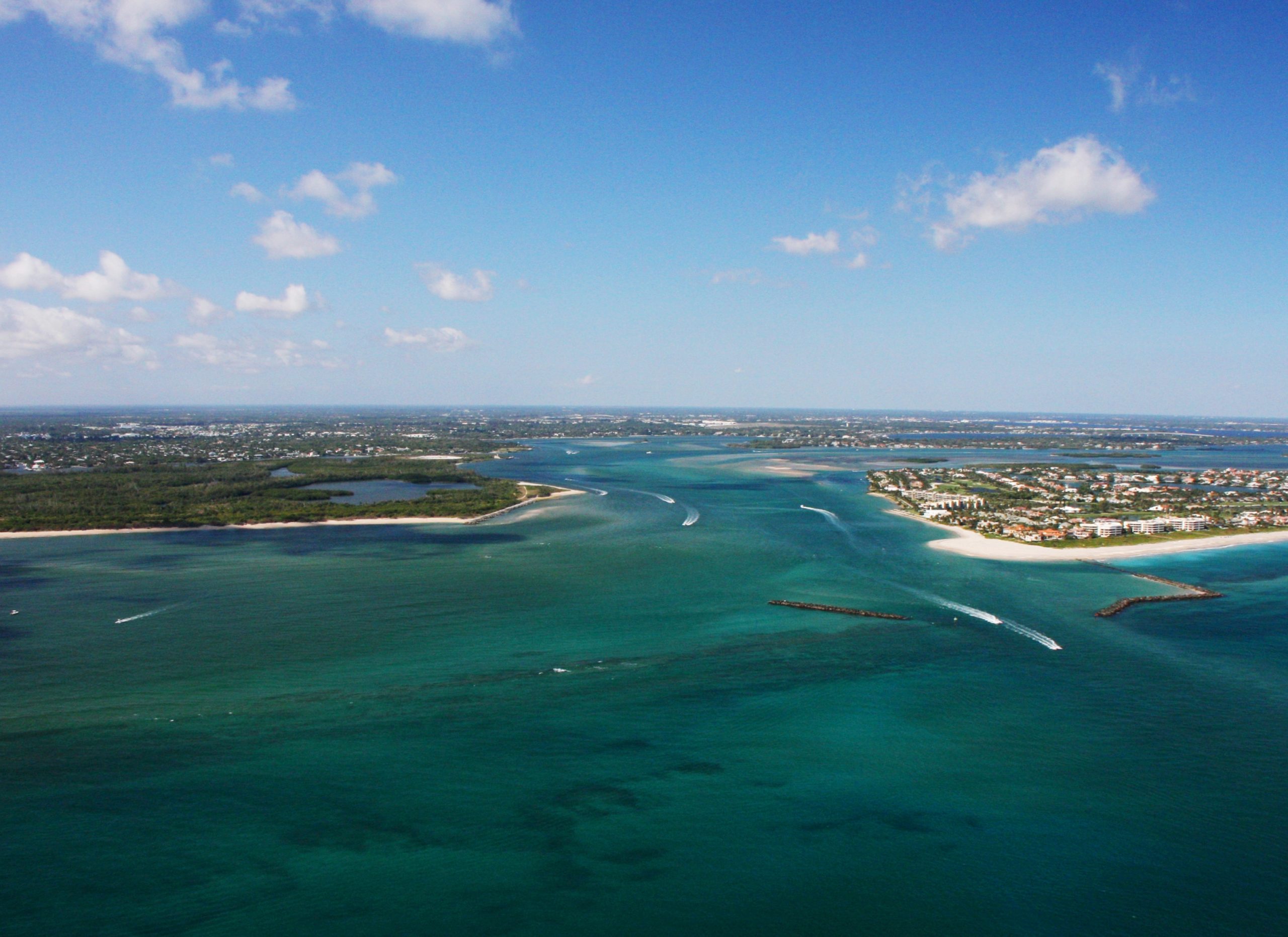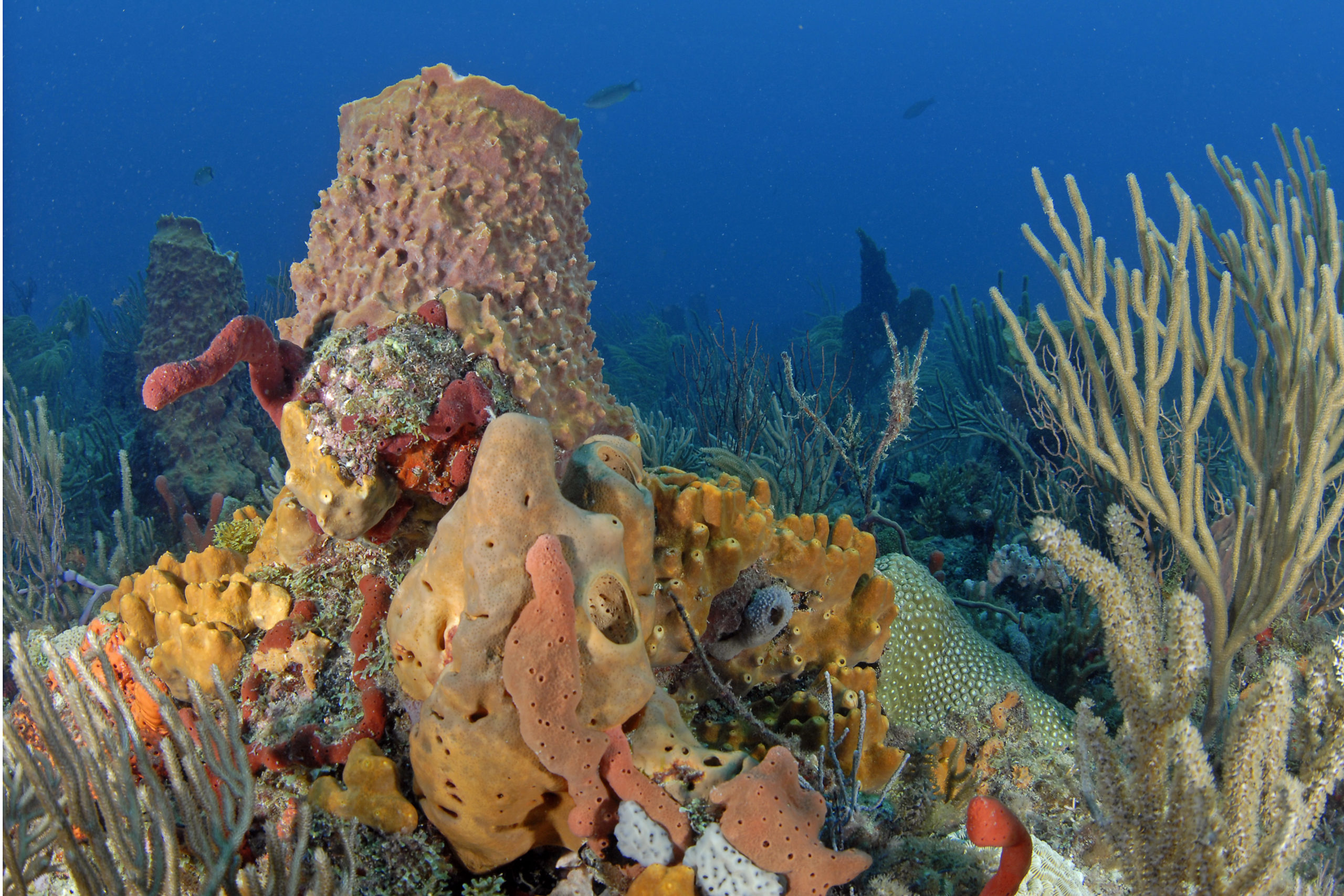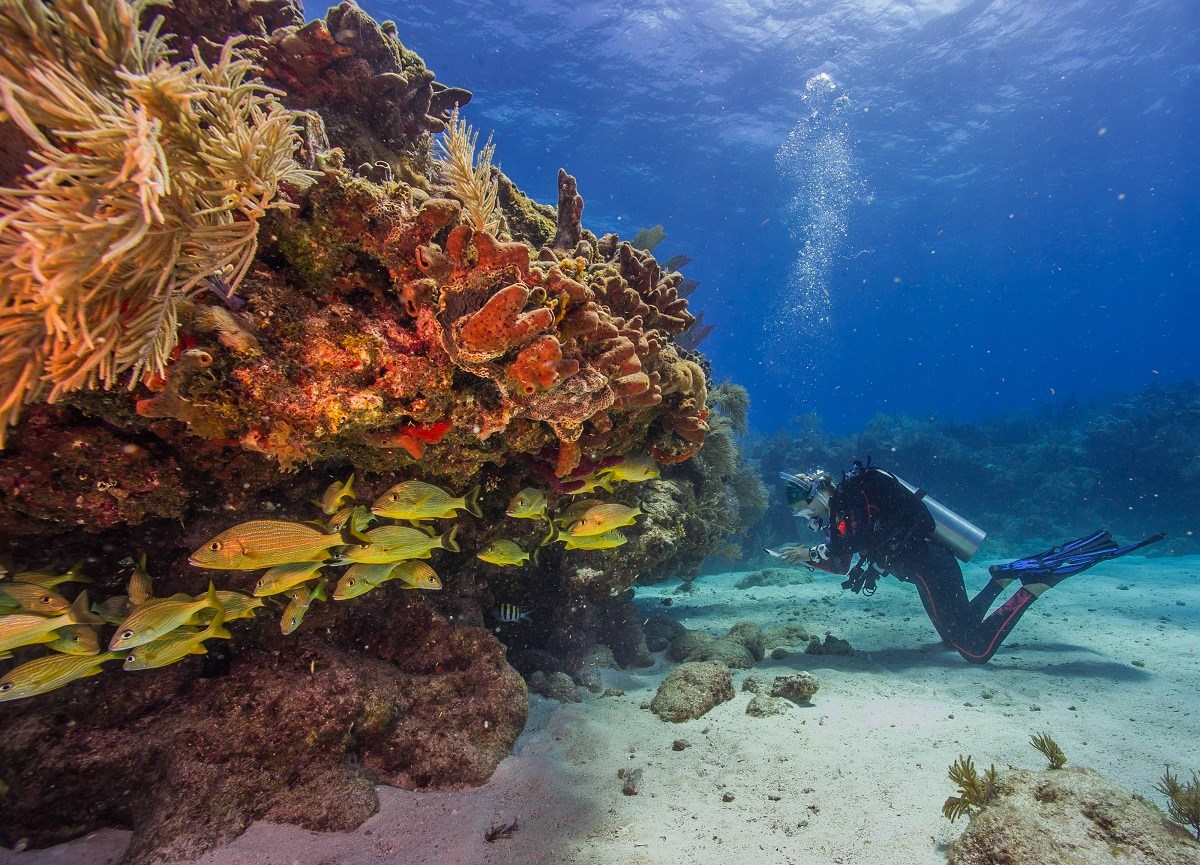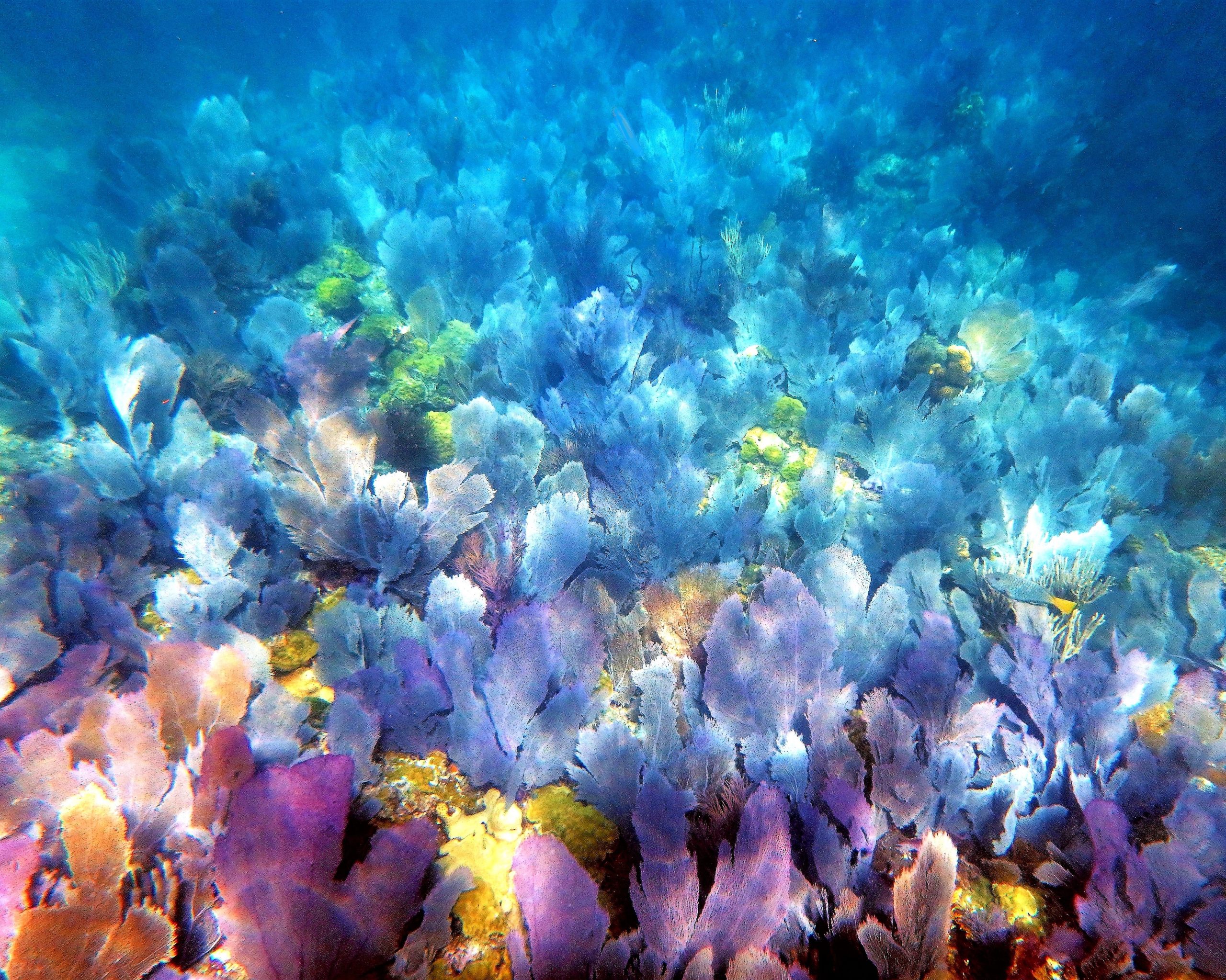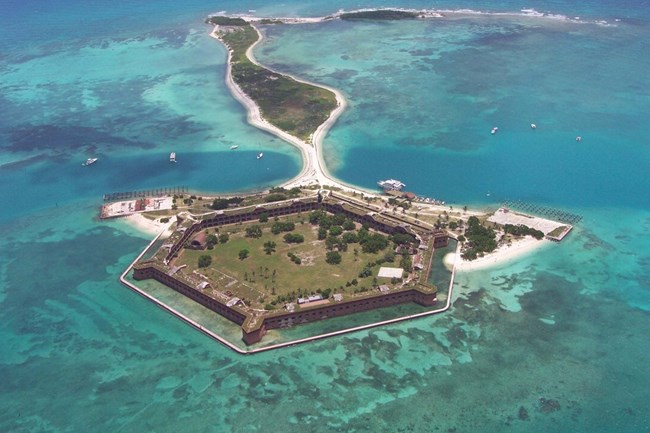Conservation
Florida’s Coral Reef benefits more than 6 million residents of Monroe, Miami-Dade, Broward, Palm Beach and Martin counties and 38 million annual visitors to this region.
The reef needs active management to maintain the existing reefs, restore those that have been injured and to prevent additional impacts. Without conservation efforts, there is a risk of losing this incredible natural resource.
Florida has a long history of recognizing the importance of its coral reefs, beginning with the designation of Key West National Wildlife Refuge in 1908.
Other important designations along Florida’s Coral Reef include:

Attribution: NPS image by Shaun Wolfe
- Ft. Jefferson National Monument (1935)
- John Pennekamp Coral Reef State Park (1961)
- Biscayne National Park (1980)
- St. Lucie Inlet Preserve State Park (1969)
- Biscayne Bay Aquatic Preserves (1974)
- Florida Keys National Marine Sanctuary (1990)
- Dry Tortugas National Park (1992)
- Kristin Jacobs Coral Reef Ecosystem Conservation Area (2018)
The federal and state agencies responsible for each of these marine managed areas work to preserve, protect and restore the natural environment and wildlife within their jurisdictions.
Each agency has slightly different management goals, programs, projects, authority and capacity to carry it out. Collectively, reef management agencies work to holistically manage Florida’s Coral Reef.
Conservation actions aim to reduce the main threats to Florida’s Coral Reef and actively restore the reef. These are guided by the management plan for each marine managed area, and periodic renewals of the plans require extensive public input and feedback. Some examples of conservation programs and projects examples are:
- Monitoring of coral, fish and water quality to determine status and trends in ecosystem health.
- Conducting education and outreach to inform residents and visitors about how they can enjoy the coast responsibly and help protect Florida’s Coral Reef.
- Enforcing existing rules and regulations to protect the reef.
- Reducing land-based sources of pollution to improve water quality.
- Installing mooring buoys for boaters, divers and fishers to reduce anchor damage to the delicate reef ecosystem.
To find out more about the different agencies and what they are doing to help conserve Florida’s Coral Reef, visit:
- DEP Coral Reef Conservation Program.
- Biscayne National Park.
- Florida Keys National Marine Sanctuary.
- Key West National Wildlife Refuge.
- Dry Tortugas National Park.
Restoration
As Florida’s Coral Reef is impacted heavily by local and global threats, coral populations are being restored by marine scientists, natural resource managers, environmental nonprofits and local stakeholders.
Restoration of Florida’s Coral Reef is important to keep population levels stable when there are disease outbreaks or other large-scale die offs, but it is also a key step in reacting to unplanned impacts from vessel groundings, anchors or cable drags.
There are many different approaches to coral reef restoration that are generally categorized under biological or physical restoration.
Biological restoration generally involves increasing the amount of living corals on the reef and includes methods such as collecting and rehabilitating broken or threatened coral fragments, propagating coral colonies, and outplanting or transplanting coral colonies. The SCTLD response showcases the power of biological restoration and effectiveness of combining multiple approaches.
At the beginning of the STCLD outbreak, partners across South Florida helped retrieve healthy corals from St. Lucie inlet to the Dry Tortugas to be stored in land-based nurseries. At the nurseries, scientists can use a technique called micro-fragmentation.
Micro-fragmentation separates one original healthy coral colony into multiple smaller fragments. When these fragments are placed near each other, they grow even faster and eventually can fuse back together. This process allows the reef to be reseeded quicker, which leads to more coral offspring being pushed out onto the reef and overall higher densities of corals. Corals that are taken into land-based nurseries are still sexually producing, and through the collection of gametes, a genetically diverse population of corals can also be put out onto the reef once the larvae are large enough to have settled.
Mission: Iconic Reefs is a project led by NOAA in the Florida Keys that is restoring coral reef habitat at several iconic sites to help change the trajectory of the ecosystem and protect one of the country’s unique areas for future generations.
Another notable restoration project is 100 Yards of Hope from FORCE BLUE. The yearlong project honoring the NFL’s 100th season and America’s military veterans restored a football field-length stretch of coral reef offshore of Key Biscayne.
Physical or structural restoration generally involves increasing the amount of reef structure and habitat available for corals and other reef organisms. The Florida Department of Environmental Protection’s Coral Reef Conservation Program executed its first management-led restoration project to repair direct impacts to coral reef at two vessel grounding locations offshore Fort Lauderdale.

Attribution: Sarah Hamlyn, Mote Marine Laboratory
For this project, there were two stages of restoration, physical and biological. For physical restoration, contractors dived construction equipment to reduce loose rubble at the site and reconstruct the reef framework that had been fractured, creating the critical 3D structure that marine organisms need in their environment. The next phase of biological restoration will include transplanting stony and soft coral colonies from land-based nurseries.
Long-term monitoring of the restoration sites is still occurring, and it is important to monitor because it is the key to understanding ecological changes and highlights ways to keep improving for the future. Restoration plans for anchoring and vessel impacts are managed on a case-by-case basis and are tailored to best account for the specific damages of the site.
Education and Engagement
Without an understanding of the existence and vulnerability of the reef and its unique, irreplaceable value to the natural world and humans alike, it is difficult for people to act on minimizing local and global threats. Fortunately, education and engagement are tools for connecting the public with coral reefs.
By creating this connection, users can form a mutually beneficial relationship with the reef, gaining value from all it has to offer while doing their part to protect it.
Engaging the public through outreach at local events can be incredibly helpful for developing awareness. Some residents who have spent their entire life in South Florida are unaware that nearshore lies the only barrier coral reef in the continental U.S.
These events give the public the opportunity to learn about a resource they may never have encountered otherwise. Engagement and education efforts can be broad such as community shoreline cleanups to more targeted activities, such as working with fishing and scuba diving communities, so they understand how their activities affect the reef.
When Floridians and visitors are engaged with their surroundings and learn about the value and fragility of Florida’s Coral Reef, more people will be dedicated to protecting this incredible ecosystem. The more that awareness increases, the more people can take action to ensure the reef will be healthier for future generations to treasure.
